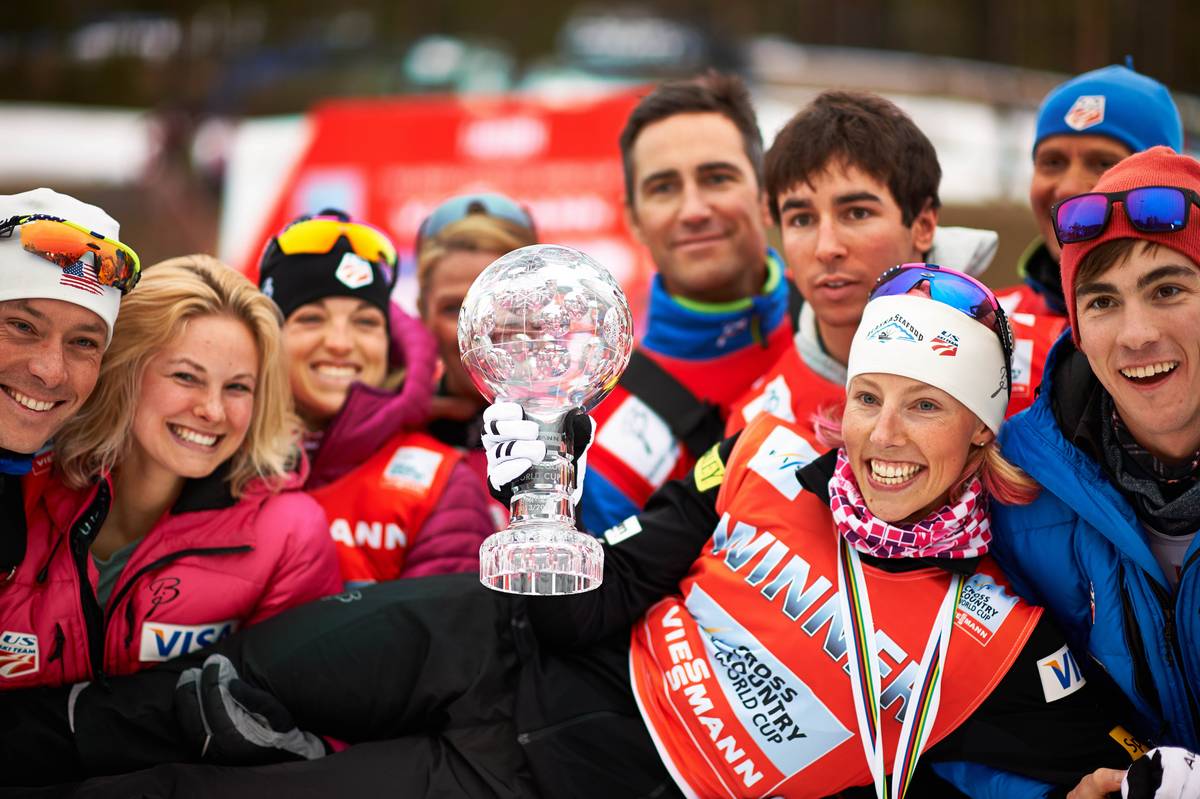
As excitement grows for the first World Cup races in Kuusamo, Finland, the U.S. Ski Team stands as one of the most talented and experienced teams America has ever fielded internationally. It’s the same crew of high-end skiers we saw challenge the world’s best last year with a few exceptions, including the departure of Holly Brooks and the addition of a D-team, with members Ben Saxton and Paddy Caldwell.
Despite the team’s overall experience, it has coped with both injury and Olympic fatigue the last several months since the 2014 Winter Games in Sochi, Russia. And some people might wonder:
- Will Kikkan Randall earn her fourth-straight Sprint World Cup title?
- Will the team medal at the FIS Nordic World Championships in Falun, Sweden?
- Will the U.S. men rise to the standard set by their female teammates in past years?
Only time will reveal the answers, but with this U.S. World Cup preview we aim to give you an update and some insight into this U.S. team.
Post-Olympic Fatigue
There are many factors working to shape the course of the Americans’ season. Fortunately, the biggest challenge to the U.S. is one faced by the entire world.
“Post-Olympic years are tough because it is such a buildup and there’s a letdown coming off of that season,” U.S. Ski Team (USST) Head Coach Chris Grover said on the phone last week. “[This year] is definitely a rebuilding year.”
After an Olympic year of highs and lows, it’s not surprising that the team suffered from fatigue. A period of motivational challenges is a regular part of the four-year Olympic cycle, known as a quadrennial, and its effects are felt from Norway to Australia.
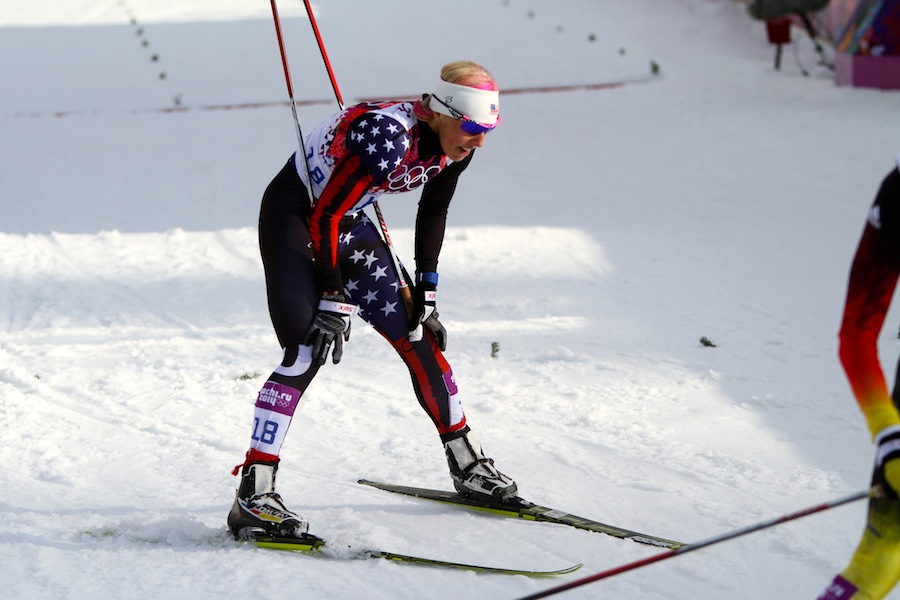
Kikkan Randall, who failed to advance in the Olympic-freestlye sprint she was favored to win, struggled to find motivation after Sochi, according to U.S. women’s coach Matt Whitcomb.
“Dealing with disappointment is hard enough, but dealing with the beginning of a brand new quadrennial, four years later into your life — there are new stresses associated with each year you spend as a professional athlete,” Whitcomb said in a phone interview. “It’s difficult to turn it around, not just for Kikkan, but for everybody on the team.”
However, the teams that push past lethargy often do best in the years following.
For Whitcomb, the U.S. is one of those teams. He believed their group could overcome any challenges that remain.
“The athletes are in a motivated state; they’re awake, they’re ready to succeed, they’re excited to do what they’re doing, and they’re enjoying what they’re doing,” he said.
Starting Hot
The U.S. has a tendency to start the season faster than most. This is especially true of the women, who finished third in the relay in the season-opening World Cup two years ago in Gällivare. Last year, Randall, Sadie Bjornsen and Noah Hoffman had some of the their best results of the season in the Ruka Triple mini tour in late November.
According to Whitcomb there are several possible reasons for their historically fast starts.
“Perhaps it’s because we have an altitude camp, or maybe we’re more aggressive with our intensity,” he said. “But in general, the team enters the winter in pretty good fitness.”
This year might be different.
Grover explained that due to training-heavy nature of the Park City camp this fall and an overall emphasis to peak in the middle and end of the season, the team is expected start much slower and build momentum throughout the season.
“Overall for the team, because of how hard everyone has been training, they won’t be looking to hit the World Cup and make a big noise right from the get-go,” he said. “They’ll be looking more towards the middle of the season for building some success.”
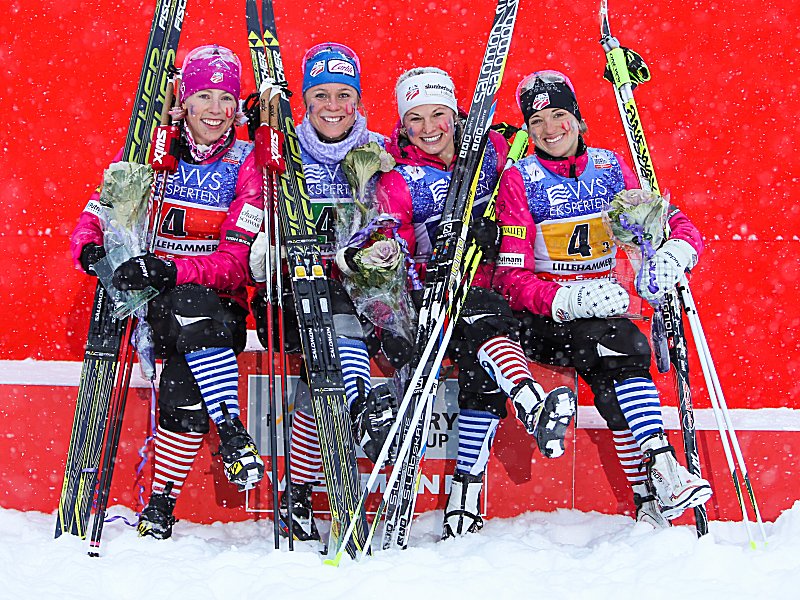
What to Expect This season
Not much has changed from last season’s World Cup roster. Six women return to the squad: Randall, Bjornsen, Liz Stephen, Jessie Diggins, Sophie Caldwell, and Ida Sargent. Last season’s overall SuperTour leader Caitlin Gregg will also join the team for the first period of World Cup racing.
On the men’s side, there are four men between the A- and B-teams (Andy Newell, Simi Hamilton, Hoffman, and Erik Bjornsen) and two on the D-team (which will start the season in the U.S.). Super Tour leader Reese Hanneman will also take advantage of World Cup starts through the end of Period 1 (into late December).
While the rosters may be the same, the USST coaches said that depending on future results, there might be changes to various starting positions and relay legs.
According to Whitcomb, the women’s relay should be especially exciting since all its women are potential candidates for a starting position for the relays in La Clusaz, France, and at World Championships in Faun, Sweden.
“The relay is always an exciting one to see who makes the team. We’ve been anywhere from challenging for a victory to almost being last place. We have six women – perhaps Sophie is the exception, but I wouldn’t count her out – that could fill those relay legs,” he said, referencing Caldwell’s elbow injury.
For the men, the options are more limited, as the men have three sprint starts and four distance spots to work with (compared to the U.S. women with five sprint starts, five distance, plus Randall). However, Grover explained that if there are several strong domestic skiers this year, the 4 x 10 k men’s relay at Falun could improve on past results.
“If we can find a couple more skiers domestically that are skiing fast this fall and through U.S. nationals, it will be interesting to see if we can put together a good relay team,” he said. “At times we’ve had two or three good legs, but we haven’t been able to put all four together, so in order to do that you need to have five or six men who are skiing at a pretty high World-Cup distance pace.”
Other season highlights will include the Tour de Ski, a series of seven races that traverse Germany, Switzerland and Italy the first two weeks of January.
As in past years, the USST plans to have all its athletes start the Tour. And once again, the skiers who plan to finish will be Stephen, Diggins, and Hoffman. The rest of the U.S. squad will exit the multi-stage event based on how they feel and their greater goals for the season.
The pinnacle of the season will take place in mid-February at the 2015 World Championships in Falun.
According to both Grover and Whitcomb, medals will be a possibility in several key races, most notably the women’s team sprint which Randall and Diggins won in 2013. Other possibilities include the men’s team sprint, the classic sprint, the women’s 10 k freestyle, and the women’s relay.
The Team
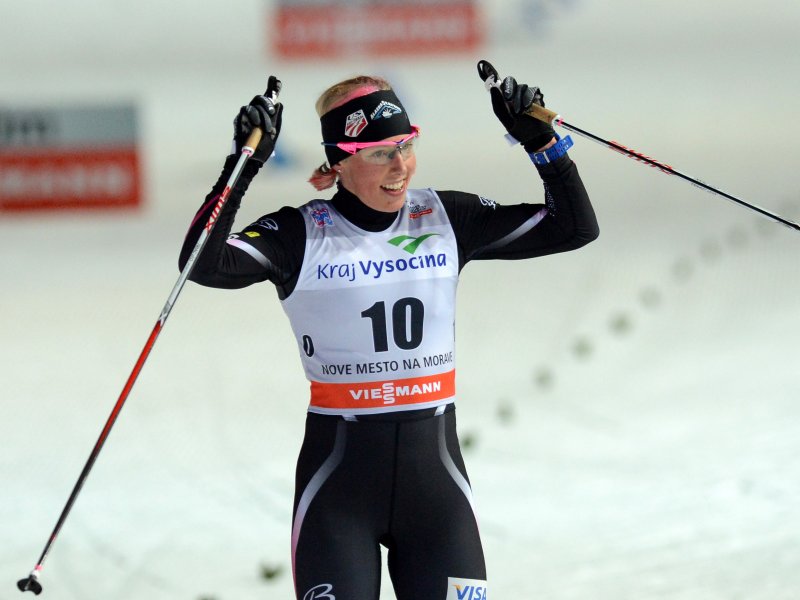
Kikkan Randall, A-Team
2013/2014 World Cup overall ranking: 6th (17th in distance, 1st in sprint)
Notable 2013/2014 results: Three-time Overall Sprint World Cup Champion; 5 individual World Cup podiums; 3 World Cup victories
Randall will return to World Cup competition as the reigning three-time Sprint World Cup champion. But after a disappointing Olympics, Randall is looking for redemption.
The fastest female skate sprinter in the world is once again a favorite for this season’s sprint globe and will lead the U.S. women to what they hope will be their best season to date.
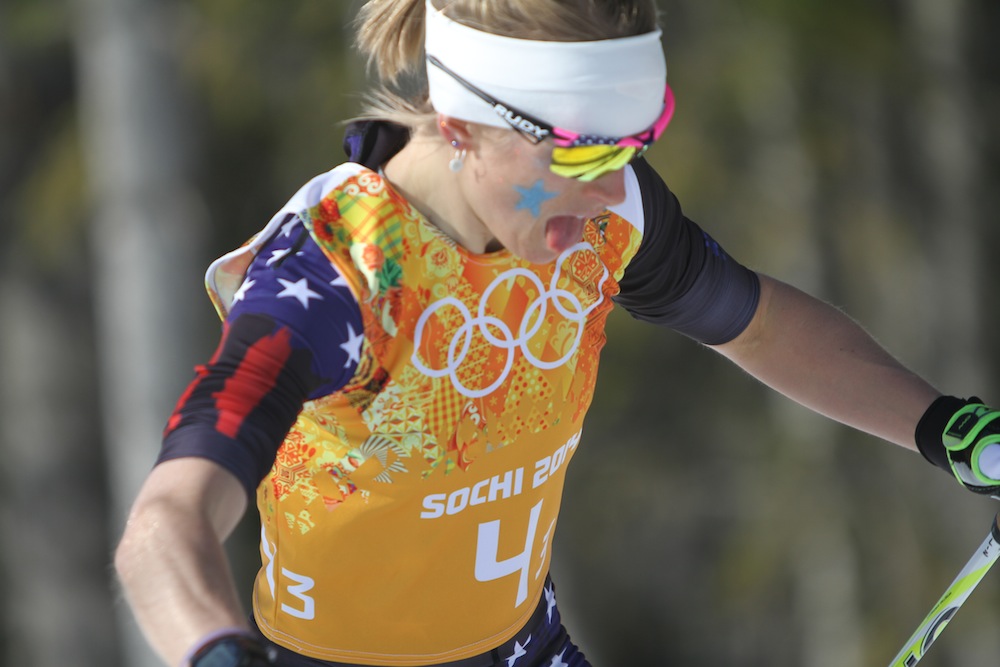
Liz Stephen, A-Team
2013/2014 World Cup overall ranking: 17th (15 distance, 62 sprint)
Notable 2013/2014 results: 7th overall Tour de Ski; 3rd Tour de Ski hill-climb pursuit; 6th in the 10 k World Cup in Szklarska Poreba, Poland
When USST members were informally polled via email as to which American was bound for a breakout season, the resounding response was Stephen. She took third in the final climb and seventh overall in last season’s Tour de Ski.
Stephen, who seems to make a step to the “next level” of racing every year, told FasterSkier earlier this fall that she felt both her personal and overall team results were below potential.
This summer and fall she rocked dryland racing – from the Race to the Top of Vermont to her fastest-ever Climb to the Castle – and many expect her to do the same on snow.
Stephen also has a history of success at previous World Championships, finishing fifth in the 10 k freestyle in Val di Fiemme, Italy. With the same event in Falun, Stephen could be a top contender for a World Championships medal if she brings her A-game.

Jessie Diggins, A-Team
2013/2014 World Cup overall ranking: 20th (21 distance, 23 sprint)
Notable 2013/2014 results: 8th, Olympic 15 k skiathlon; 13th overall Tour de Ski; 5th freestyle sprint Szklarska Poreba
At 23, Diggins is the youngest woman on the USST, but she’s established herself as one of America’s gutsiest skiers. Whether it’s her relay finishes or a one-poled leg of a team sprint, she has proven herself a fighter.
Diggins will be looking to improve on her 13th overall ranking in the 2013/2014 Tour de Ski this January. However, her biggest goal for the season is to defend her 2013 team sprint title with Randall in Falun. With strong freestyle sprinters vying for a spot on the relay, she’s going to have to work hard to maintain her position.
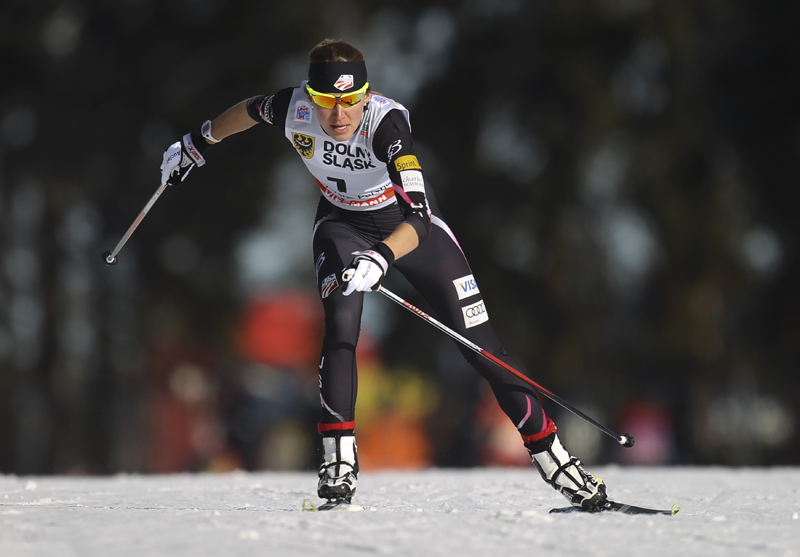
Sophie Caldwell, A-Team
2013/2014 World Cup overall ranking: 23rd (47 distance, 8 sprint)
Notable 2013/2014 results: 6th, Olympic freestyle sprint; 3rd freestyle sprint Lahti; 7th freestyle sprint Szklarska Poreba
Caldwell had one of the most notable USST performances of last season – the top finish by an American woman at an Olympics with her sixth place in the freestyle sprint. The result was closely followed by her first World Cup podium in Lahti.
While Caldwell may be considered a rapidly rising star, she’s faced major setbacks this summer and fall in the form of two broken elbows – one in May and the other in October.
Because of her most recent mishap, the 24-year-old Vermont native will not be starting the World Cup this weekend in Finland. While Caldwell said that her elbow is recovering nicely and that she was recently able to use both poles, she will either start her season in the sprints in Lillehammer, Norway, or Davos, Switzerland.
Although she won’t race the season opener, Caldwell is currently in Kuusamo with the rest of the team.
According to Whitcomb, it was important to get Caldwell on snow as soon as possible.
“We just want to bring her overseas to be able to work with her on snow,” he said. “I’d rather see her take a tumble on snow than in rollerskis in Vermont this time of year.”
One upside of her injury is that it has forced her to focus on her leg strength – something she said was a goal before she broke both incidents.
If all goes according to plan, Caldwell will join the majority of the team in starting the Tour and exit after an unspecified amount of races. She’s aiming to have her best results in Falun, where she wants to perform well in the classic sprint.
While she explained that classic sprinting will be difficult early in the season due to her decreased upper-body strength, she is confident that she will overcome any deficit by World Championships.
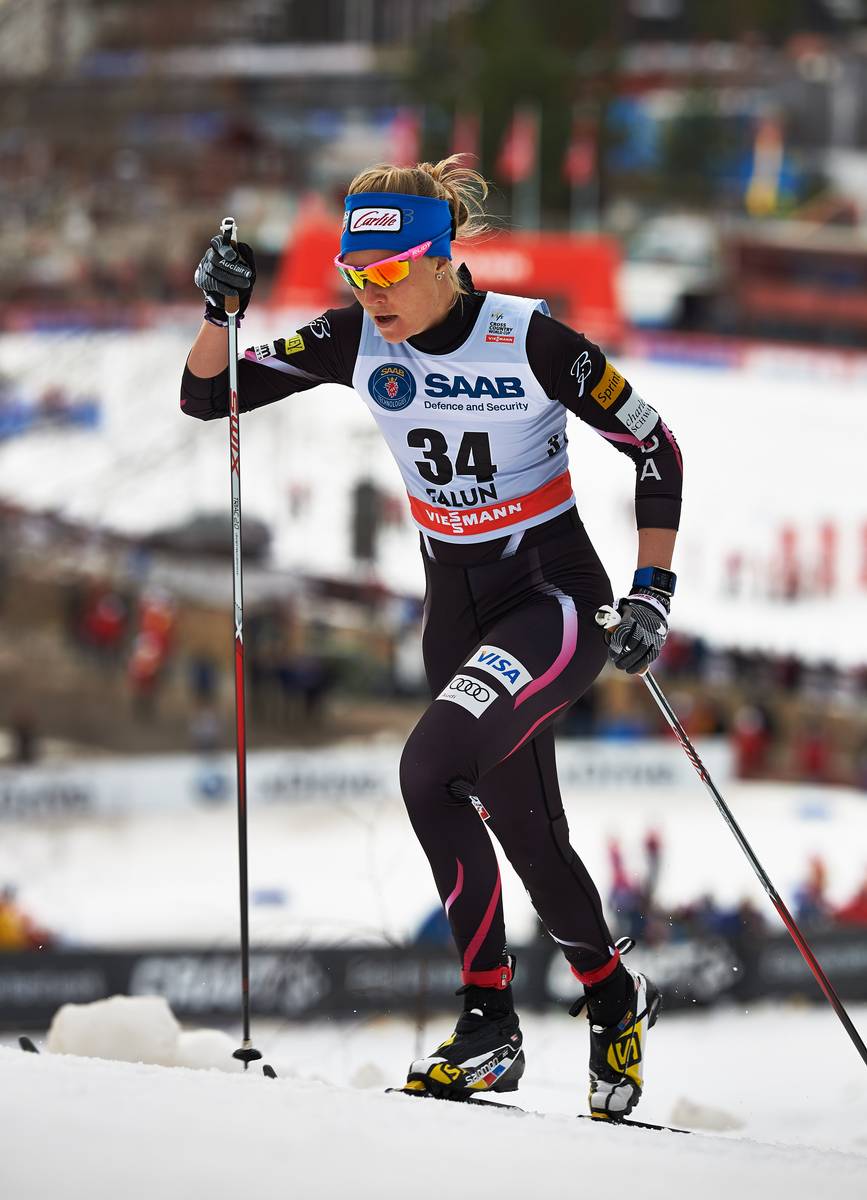
Sadie Bjornsen, A-Team
2013/2014 World Cup overall ranking: 32nd (26 distance, 43 sprint)
Notable 2013/2014 results: 7th, 10 k classic Lillehammer; 7th, 5 k classic Kuusamo; 9th freestyle sprint Lahti
Like Caldwell, Bjornsen is seen by many as one of the rising stars on the USST. While she’s been riddled with injuries in previous years her problems seem to be a thing of the past, as 2013/2014 was a breakout season for the 25-year-old Washington native and Anchorage, Alaska, resident. With strong results in both classic distance and sprinting, Bjornsen will be heading into the season with confidence.
For one, she’s wants to be a part of the competitive women’s 4 x 5 k relay in Falun this season. She explained that she also hopes to find success in the classic sprint and the 30 k classic.
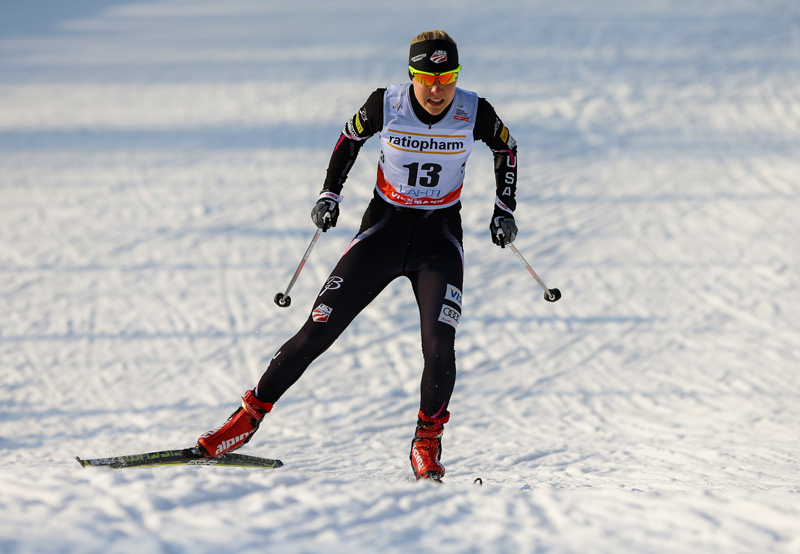
Ida Sargent, B-Team
2013/2014 World Cup overall ranking: 49th (48 distance, 33 sprint)
Notable 2013/2014 results: 9th, 10 k Szklarska Poreba; 10th classic sprint Asiago
Sargent has always been a wild card with results across the board. Two seasons ago, she found success in both distance and sprinting, finishing the season ranked 22nd in sprinting and 53rd in distance. Despite an improved distance ranking in 2013/2014, Sargent fell to 33rd in sprinting thus losing her spot in the red group.
Sargent said that she will be focusing on sprinting this season with the hopes of earning a spot on the relay team. She already won a race in Canmore, Alberta, at the Frozen Thunder classic sprint against some of the best U.S. and Canadian skiers.
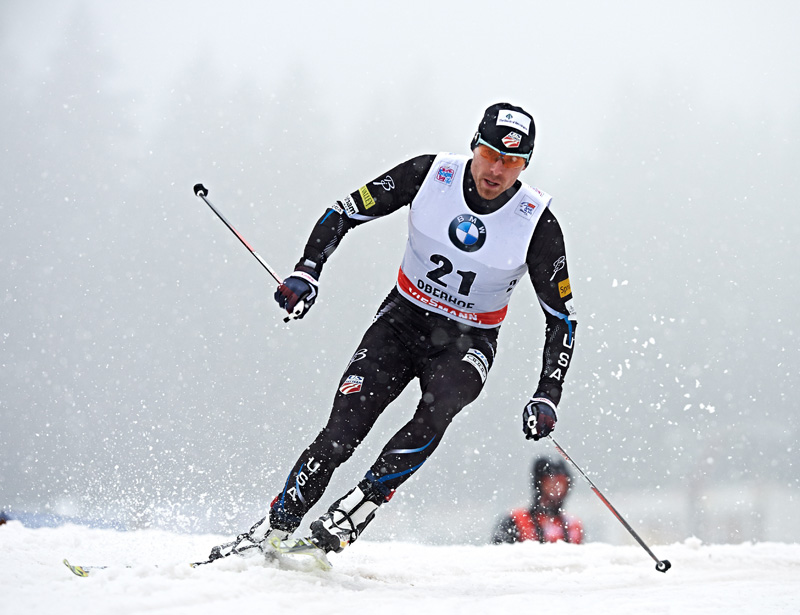
Andy Newell, A-Team
2013/2014 World Cup overall ranking: 39th (38 distance, 15 sprint)
Notable 2013/2014 results: 6th freestyle sprint Szklarska Poreba; 8th classic sprint Falun, 8th freestyle sprint Lenzerheide
Newell, 30, is to the men’s team as Randall is to the women’s team — he has the most experience and looks to lead the team to improved results in 2014/2015.
However, Newell did not have the season that he hoped for last winter. Falling from from 5th in 2012/2013 to 15th in the sprint rankings, Newell will be looking looking to regain his position as one of the world’s top sprinters. However, will also be looking to branch out in Falun with a start in the 50 k.
“The races that are on my mind are the sprint and the sprint relay for sure,” he wrote in an email. “Those are our big medal events that we need to put the most focus on. In addition I think this is going to be my first World Champs where I’m going to fight for a start in the 50 k classic mass start. Now that I’m an old guy I’d like to start looking at some 50 k’s as a chance to be competitive.”
At the pre-World Cup USST camp in Muonio, Finland, Newell surged to a convincing win in a 15 k time trial over his fellow USST teammates, giving the 29-year-old Vermonter yet another confidence booster (after a Frozen Thunder classic sprint win in October) before the opening World Cup races.
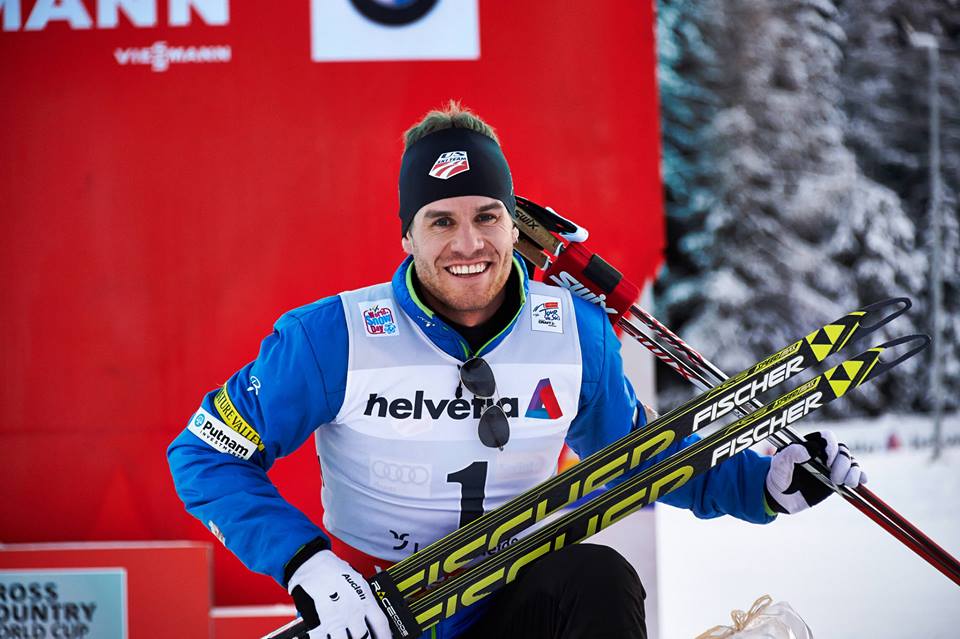
Simi Hamilton, A-Team
2013/2014 World Cup overall ranking: 54th (20 sprint)
Notable 2013/2014 results: 1st freestyle sprint Lenzerheide (Tour de Ski World Cup stage); 14th freestyle sprint Davos
Hamilton a breakout season last winter with a win in a Tour de Ski stage in Lenzerheide, Switzerland.
“It should be a really fun year to watch Simi,” Grover said. “He built a lot of confidence last year from being able to prove to himself that he could win a race on the right day.”
Meanwhile, Hamilton has faced some obstacles this fall with a repeated ankle injury at the team’s dryland camp in Lake Placid, N.Y., and a shoulder injury during Frozen Thunder in Canmore.
In past years, he suffered from illness on and off throughout the season. If Hamilton can stay healthy, this season could be anther success story for the Aspen native.
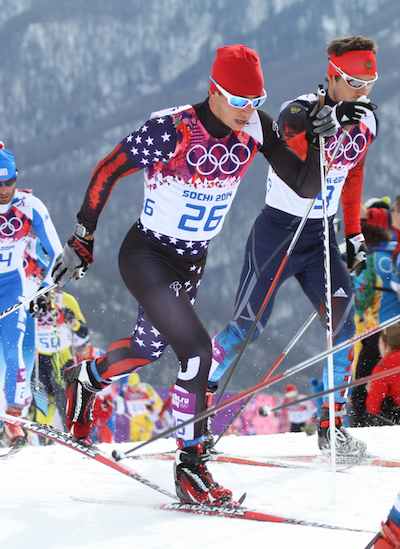
Noah Hoffman, B-Team
2013/2014 World Cup overall ranking: 35th (27 distance)
Notable 2013/2014 results: 9th, 15 k freestyle pursuit Kuusamo; 21st overall World Cup Finals, 24th overall Tour de Ski
Hoffman is the men’s top distance skier on the World Cup circuit, and on a good day he can ski with the best in the world. Hoffman proved this in last year’s Ruka Triple, where he skied the fastest race in the final pursuit to finish ninth overall in the mini tour.
Despite his potential, Hoffman often has faced difficulties maintaining his speed throughout a race and has gone from leading a mass start to 30th position in a matter of kilometers.
In what was likely a bad day, Hoffman recently finished the USST 15 k time trial in Muonio roughly a minute and half behind Newell. Despite the rocky preseason skiing, if Hoffman continues on his current trajectory, he could fight for top positions in the distance races at World Championships.
Furthermore, Hoffman feels the courses in Falun favor his strengths.
“At World Championships, all three individual distance races are great opportunities for me,” he wrote in an email. “I truly believe I can be successful in any distance race, skate or classic, and I’m very excited to have so many chances. The courses at Falun are really challenging and great for me.”

Erik Bjornsen, B-Team
2013/2014 World Cup overall ranking: 133rd (85 distance)
Notable 2013/2014 results: 18th, 15 k classic Tobalch
The 2014/2015 season marks the first time Bjornsen has embarked on a full season of World Cup racing. While he had his first taste of the World Cup in 2012, he started last year’s season on the domestic circuit. The move paid off, as Bjornsen rode a wave of success from U.S. nationals into both the U23 World Championships and the World Cup.
Bjornsen’s most notable result of last season was in Toblach, Italy, where he placed 18th in the 15 k classic. While he didn’t crack the top 20 again, he did go on to have a successful Olympics where he was consistently in the 30s and 40s.
Bjornsen explained that he is exited to race in the Tour de Ski for the first time and that he hopes to be part of the team sprint in Falun. However, his main focus is qualifying for World Championships.
[See the slightly changed World Championship criteria here, which lists USSA points as a final consideration instead of FIS points.]
Lander Karath
Lander Karath is FasterSkier's Associate Editor from Bozeman, Montana and a Bridger Ski Foundation alumnus. Between his studies at Middlebury College in Vermont, he is an outdoor enthusiast and a political junkie.




8 comments
lihtsalt666
November 27, 2014 at 10:11 am
By the USSA relase:
“World Championships Team: The World Championship Team will be named in January, based primarily on World Cup results.”
So at least for womens team it does´nt matter the domestic results or do they consider USSA points or FIS points. This might be olympic team situation vol 2.
skijumper
November 27, 2014 at 10:14 am
Oh it is definitely going to be olympic team situation vol. 2. and it will be awesome! #TeamFreeBirdXC #TeamGregg #Thicke
lihtsalt666
November 27, 2014 at 12:36 pm
How is that awesome? It basiclly means that women don´t have any point raceing ST and NC because the team is already decided even before the season begins.
Morten
November 27, 2014 at 6:21 pm
@lihtsalt666: You said “this might be olympic team situation vol 2”. For someone who doesn’t follow US skiing that close (though I would had it been televised), how do skiers who race the SuperTour stack up against those on the USST? And how does level of the SuperTour compare to the Scandinavian Cup? Of course this season hasn’t started yet, but judging from previous years.
Tim Kelley
November 28, 2014 at 2:00 am
Morten, Though others are much more qualified to comment on the Oly selection drama of last year than me, I believe lihtasalt666’s reference to “vol 2” means there is little chance domestic skiers can qualify no matter how they do in ST and NC. Per last year, a woman that won the NC 20 km by 3 ½ minutes didn’t make the Oly team, though a USST woman ranked 49th in the WC did. Also, a non-USST male winner at the NC was not selected even though the Oly team quota was not filled. If the selection process has not changed, these types of USST protectionist problems can happen again (i.e. lihtasalt666’s “ vol 2”).
Morten
November 28, 2014 at 3:29 am
@TimKelley: Yeah, I get that, I was just curious about the skiers who race the SuperTour and how they stack up compared to the USST skiers. Also how the overall level of skiers who compete in the SuperTour would compare to the skiers who race the Scandinavian Cup.
skijumper
November 28, 2014 at 9:25 am
Hey! Is it just me or are other people in need of a master list of FasterSkier/Nordic lingo acronyms??? This is getting downright confusing, but we better get this going so Grover can read our suggestions BEFORE they name the WC (worldcup? World champs? German bathroom closet?) team this year.
Martin Hall
December 3, 2014 at 10:50 am
Grover explained that due to training-heavy nature of the Park City camp this fall and an overall emphasis to peak in the middle and end of the season, the team is expected start much slower and build momentum throughout the season.
“Overall for the team, because of how hard everyone has been training, they won’t be looking to hit the World Cup and make a big noise right from the get-go,” he said. “They’ll be looking more towards the middle of the season for building some success.”
Someone better get this message to the Norwegians—could they have come out of the gate to fast—also, the Canadians tried this strategy last year and fell flat on there faces and I mean fell flat–trying to focus on there trng for Sochi in Nov.. It took Alex until the last part of the year to get back in the saddle and the rest of the team never really did. Davos altitude/distance camp in early November when every one else was in Scando racing—and they were in the hole.
Chris and Matt must have been talking to Justin to get low down on how that worked, because they are in the hole now.
I’d take results like last year anytime over what they produced this past weekend—-I think it is dangerous to talk like this.
A whole bunch of things got out of control last year at the end of the 1st period—like Sadie’s break around Xmas that turned into a sick-fest of some 4-5 weeks—-plus throwing exams into the load if I remember right. Being an in season fulltime skier does not accommodate a 2nd job—being a full time student also. Like Matt being the Women’s coach and also doing an accountants job while on the road for some company—crazy in the wax room the next mrng.
If done right with all the training these people are doing and have done—the in season modifications are ever so important and have to very individual. Example: Look how fast Bjorgen bolted from the TDS last and didn’t race for the next 16 days—she wasn’t right and took 2 weeks to get it right.
One other point—Kikkan, and the rest of the team got it back together after Sochi—didi they have a Sochi flu???
Keeping my fingers crossed for this next weekend.